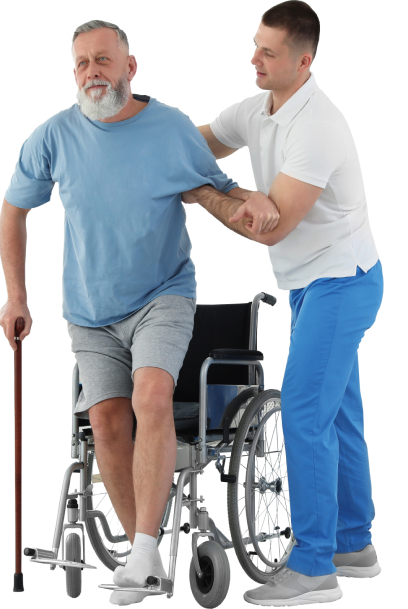Encampment residents were not offered shelter or storage for their belongings, and endured weeks of uncertainty and fear.
|
For several weeks, an encampment of unhoused residents located in Harbor City has endured fence repair, leading to daily threats of sweeps. Encampment residents shared their frustration and confusion with Knock LA, and most reported not being provided any offer of shelter beds or storage for their belongings.
The encampment has existed in its current iteration for several years, and many of the residents arrived there after leaving from a nearby area called “the tracks,” located in a field nearby on land owned by the County of Los Angeles. Residents told Knock LA they were informed they could move to their current location by LA County officials.
After the community moved, members ran into numerous new hardships and battles with CD 15 Councilmember Joe Buscaino’s office, as well as the LAPD. Many residents of the encampment have lived unhoused in the area for several years.
Advocates for unhoused people often run afoul of employees of Councilmember Buscaino’s office, even as Buscaino has attempted to make his strategy on encampment clearing a cornerstone of his mayoral run.
Knock LA has witnessed tense exchanges between advocates and unhoused residents with CD 15 employees and LA Sanitation. There have even been several arrests made by the LAPD over the past year during what the city calls “major cleaning” operations. [Ed. Disclosure: Sean Beckner-Carmitchel, the author of this article, was arrested in July 2021 while covering a “comprehensive cleanup” at this Harbor City encampment. The charges against Sean were dropped in October 2021.]
Despite the CDC having strongly advised unhoused people to “remain where they are” during the COVID-19 pandemic if no individual housing options are available, the Harbor City encampment was the first to experience what residents often call sweeps and the city calls “comprehensive cleanups,” after a brief moratorium in 2021. Buscaino even lobbied to “fast-track” bringing back comprehensive cleanups in his district while other councilmembers wanted to move more slowly during the pandemic.
Buscaino’s team has, on at least two occasions, lied about the number of encampment residents living in CD 15, while claiming his strategy is effective. There was even an incident where an advocate for unhoused people was shoved by Buscaino’s senior adviser during a press event.
The night before the fence repair began, Knock LA talked to a resident of the encampment who goes by Tan. Tan has been at this encampment for three years, and had previously spent five years at the tracks.
Taking drop-offs of cans and bottles using a hand-painted sign, Tan makes his living by recycling cans and spending some time with a sign near an overpass asking for donations. He said that people leave cans for him to take to a recycling facility and food donations early in the morning. Mentioning he was unsure how he could receive the donations of cans if he moved for two weeks, Tan said he was concerned with losing that income.
Sharing his chores for the day — crushing and processing cans for recycling, charging his phone, purchasing food from the grocery store, getting new batteries every few days, and other tasks — Tan told Knock LA that they all become more difficult on days he has to move all of his belongings during sweeps.
Shadow, who has lived at the encampment for several years, described services promised but never delivered — or later taken away. “They scattered us all out, and everything’s changed since then. Everything’s gone bad since then.” A local business owner provided a dumpster to the encampment after several months of residents not having enough dumpster space and occasionally no dumpster at all.
Shadow told Knock LA, “our trash builds up and we don’t have anywhere to put it, then they target us for the trash.” Shadow questioned the city’s response and the conditions in the camp, saying “we’re not getting electricity, we’re not getting water, we’re not getting to use the bathrooms. And they’re leaving us like that. I don’t understand that.”
Many residents acknowledge how difficult the area is for an encampment, but while describing the difficulties, they stress that the area is the best option available. The encampment runs alongside a dirt road, and often the dirt gets kicked up by weather and nearby trucks. Portable restrooms on the nearby LA County land were filled with feces after not being cleaned for months, while the portable restrooms at the current encampment location were removed in late 2021.
One resident, situated alongside a busy street, was hit by a vehicle in August 2021 and required hospitalization. Tan told Knock LA of noise level concerns for encampment residents, saying, “I swear to god every hour there’s got to be at least three or four emergency vehicles with their sirens passing by your tent with that high pitched screeching noise.”
Before fencing construction began, signs were posted giving notice of major cleanings for two consecutive days, despite the encampment having been “cleaned” twice the week before. Conflicting information from multiple city and county agencies compounded anxiety and misunderstandings: some residents reported that employees of Los Angeles Homeless Services Authority (LAHSA) informed them that the area might be fenced off completely.
A flyer titled “Fence Replacement Project” was handed to one unhoused resident, showing a map of the fence bordering the encampment and describing a three-week repair period. Residents reported they were told by an LAPD officer that they should relocate to a street corner nearby, and most did so in the night before the cleanups began.
As the comprehensive cleanups began on Monday, CD 15 Field Deputy Caitlin Muldoon was present to watch the operation. At least a dozen city vehicles arrived for the sweep. LAHSA officials were present, but told at least two of the unhoused residents that there were no beds available for temporary shelter.
Once one side of the encampment began getting taped off, a group of unhoused advocates requested to speak with Muldoon, who confirmed that the project would last two weeks. After being asked why the area had undergone two sweeps just the week before and were scheduled for two more, Muldoon told the group that CD 15 was informed that “this is for a construction project for all of this fencing that’s going to be replaced.”
She told the group that “there has been continuous outreach out here. Continuous. So unfortunately all of the beds as of this week are full.” She later told the group that “we have to have this project completed. Because as of now the supplies are available, the crew is available.” She did clarify that the encampment residents could return after business hours every day, but did not offer solutions to the group as to how the residents could move personal belongings and tents every day.
During the impromptu discussion, advocates voiced dissatisfaction with the City, as well as Muldoon. An unhoused advocate said “a fence is more important than the lives of the people who are living here who you’re evicting temporarily, [and] who have nowhere to stay?” Another advocate told Muldoon that the residents were “much less safe” on the nearby residential street where they were relocated to for the upcoming weeks. One advocate joked that he could repair the fence more quickly and cheaply on his own.
At various points during the discussion, Muldoon ordered the group to stop yelling at her — though the group did not appear to be louder than was necessary given equipment in operation nearby.
Knock LA asked Muldoon what the outreach from LAHSA entailed, given that they don’t currently have beds available. She told the reporter that it was “informing them of the construction,” and that it was “so they can relocate.” Despite both LAHSA supervisors and CD 15 employees stating to residents that there were no beds available at the beginning of the operation, a large cadre of LAHSA workers arrived and began telling residents that “one spot was available, but they’d need to hurry.”
As Knock LA was interviewing residents of the encampment, a third “Notice of Major Cleaning” for Wednesday, April 6, 2022, was posted by an LA Sanitation employee. An advocate for unhoused residents sent Knock LA pictures of such notices, which have been functionally continuous since the fencing project began.
Councilmember Buscaino and his office did not respond to calls or requests for follow-up comments to Knock LA for this story. LAHSA employees on site referred Knock LA to their offices, which did not respond to requests for follow-up for this story.
As residents of the encampment attempted to make sense of the situation after crews started work, they told Knock LA about their frustrations with the new area and the difficulty of living in an encampment in CD 15.
One resident, who asked to go by W, said, “Got me walking up and down these streets? It’s like we are in Apocalypse Now or something. …Broken knees, broken legs, hit in the head with a bat, hit in the head with a 2×4, DOA, ear bitten off. What the fuck is y’all waiting on?”
Shadow told Knock LA, “We’re not bad people, we may have all made some bad choices. But nonetheless we’re all American citizens; we buy shit, and we are paying taxes on everything that we buy.” He called the situation in Harbor City a human rights violation.

 310.984.6972
310.984.6972




 Service Areas
Service Areas























